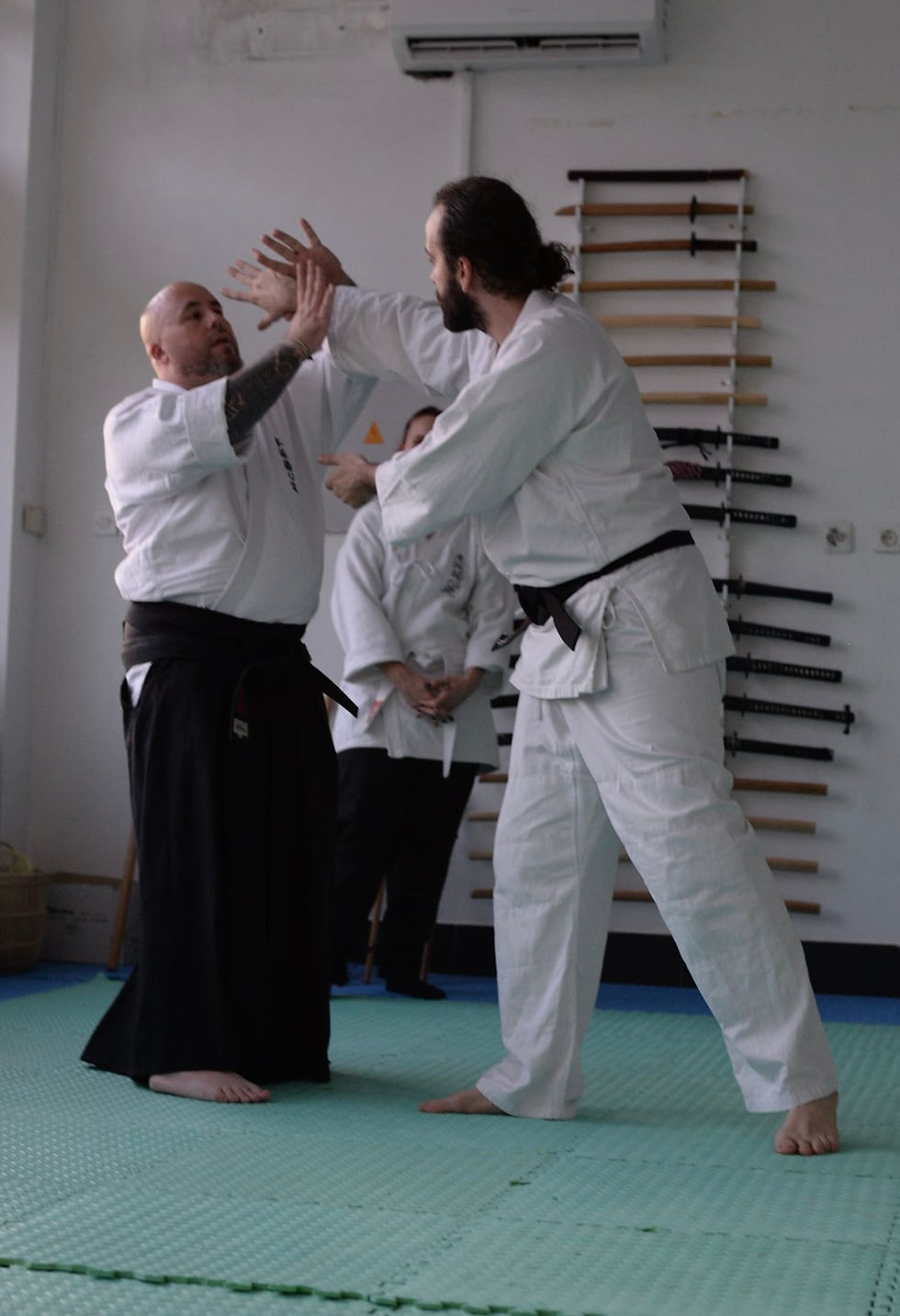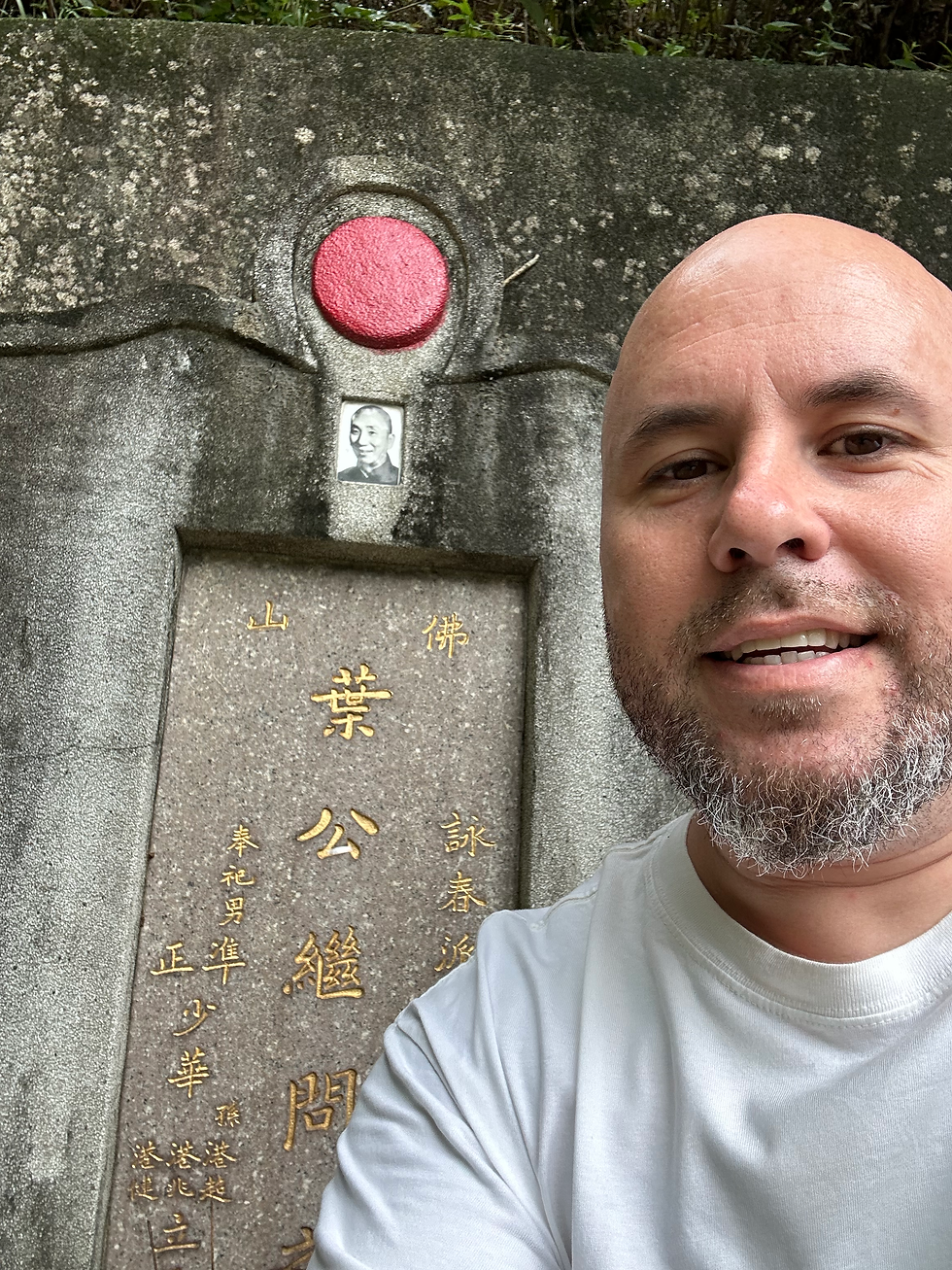
The Senpai-Kōhai Relationship, and Responsibilities of the Senpai
- Guy P

- Nov 13, 2023
- 5 min read
Updated: May 7, 2024
Senpai – Kōhai Relationship
Both ‘Senpai’ and ‘Kōhai’ are terms used to refer to an individuals’ hierarchical place within an organisation. Here in the UK we see these terms most commonly associated with martial arts, and often only the ‘Senpai’ term is used.
There are elements of this that you may have experienced, and, or undertaken without even realising that this is what has happened. When you line up in class in order of rank for example, or when a more experienced student gives you a nudge to stand in the correct place or to pay attention, etc.
In this article I’d like to look a little closer at the relationship between these terms, and the responsibilities assumed….
The first thing I would like to highlight here is that in the same way as words like ‘Sensei’ or actions such as bowing, the idea of the Senpai-Kōhai relationship is not something unique to the martial arts, but rather something interwoven into everyday Japanese culture.
The idea can be traced back to Confucianism, with the purpose of creating a strong society or organisation by promoting unity within a group while removing internal competition. While informal, the hierarchal nature of the system puts each and every individual into their own unique position in society or the particular group which can be easily understood by those familiar with the roles.
As with many things in Japanese culture there is far more nuance to this concept than I can represent in a simple article like this, but in simple terms it refers to individuals being ‘Senior’ or ‘Junior’ depending on the specific situation. The Senpai taking responsibility for guiding and encouraging the Kōhai, with the Kōhai repaying the effort by treating the Senior with due respect and by trying their best.
As this is written specifically for our Dōjō, I will focus on here on the responsibilities of the Senpai in terms of martial arts training.
Above I mentioned that this is an informal system, being a Senpai or Kōhai is not a rank or title given, but a role taken on which allows those with more experience to help those with less. It is more of an older-younger sibling relationship than that of a superior and subordinate.
In most cases it is easy enough to interpret who is Senpai or Kōhai in a given situation, a higher rank for example. There are however times when a number of considerations are at play, when someone has less experience but is older in age for example.
It is important to note, that these ‘roles’ are not static. A Senpai in one situation will then be Kōhai in another. Think of lining up for a martial arts class, if you look towards the lower grades you are Senpai, but turn your head towards the higher grades and you have become Kōhai.
For a beginner in their very first class everyone in the Dōjō is their Senpai, if another person joins at the next class however, the newcomer is already that persons Kōhai.
The Sensei may be the most senior within the Dōjō, however they will have their own Senpai within a wider organisation, or perhaps from their own training journey.
It can be amusing therefore if you meet someone who introduces themselves as a Senpai, or where a specific rank is referred to as Senpai.
The responsibilities of the Senpai
Etiquette
A Dōjō can be a complicated place, from the moment you enter there are a myriad of rituals and points of etiquette at play. When I say ‘rituals’ here I am not referring to anything religious or grandiose, but simply removing your shoes and placing them neatly, bowing before entering, the correct place to change your clothes, where to stand, whether to begin warming up, how to line up, etc, the list goes on…
This is where the Senpai role comes into play, helping to assimilate newcomers smoothly to avoid any potential breaches in etiquette or embarrassment. In general terms, it should be the Senpai that shows newcomers the ropes here rather than the Dōjō Sensei. This helps to make newcomers comfortable and quickly feel as though they belong.
In essence, if a newcomer or lower grade makes an error in the Dōjō it is the Senpai’s responsibility to correct it and to bear any burden of embarrassment. This is why it is also important for the Kōhai to make their best effort to take on any instructions.
Training
During training or practice the Senpai should allow Kōhai to benefit from their experience in order to help them to improve.
Overall this should mostly be in the form of setting the correct example for Kōhai to follow. Where possible with correct technique and providing the Kōhai with good Ukemi to work with, but much more importantly in how the Senpai carries themselves. Training with the correct spirit and making their best effort.
Any technical help should be given in terms of general advice and feedback on how a technique feels and/or whether it is working correctly, unless advised otherwise.
The Senpai should not try to teach the Kōhai anything new, or alter their technique unless asked to do so (or allowed) by the Sensei. It is important to note here that while a Senpai may have more experience than the Kōhai, they are not necessarily qualified to teach or even at a point where their own technique is correct.
The Senpai should respect the Kōhai’s journey and not unduly interfere, the best understanding of martial arts comes through dedicated practice and working things out for yourself.
Camaraderie
One of the more important, but often overlooked responsibilities of a Senpai is to help build camaraderie within the Dōjō.
Continuing from the idea of assimilating new members a Senpai should be a friend to their Kōhai, encourage them, make sure they are included. The term ‘take them under your wing’ would be appropriate here.
If this system works correctly everyone will be playing their own part in helping to cultivate a positive Dōjō environment, where each member contributes in some way toward other students’ experiences.
The Dark Side
In any situation where there are Seniors and Juniors, there is potential for abuse of the system. This can manifest mainly through bullying, favouritism, and in some cases discrimination.
I’m not going to go into this further (as it is clear from the above that this is not in the spirit of the Senpai-Kōhai relationship) other than to say that this is something to be aware of.
In the role of Senpai this is something you should be looking out for in your Kōhai and their interactions as Senpai to others.
I hope you have found this to be useful, please comment if you have any questions.





Comments